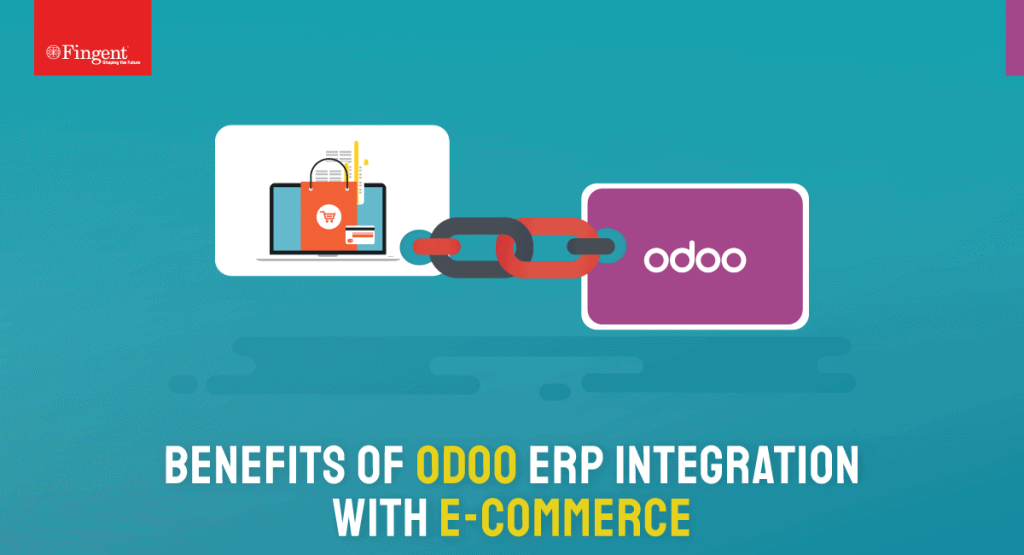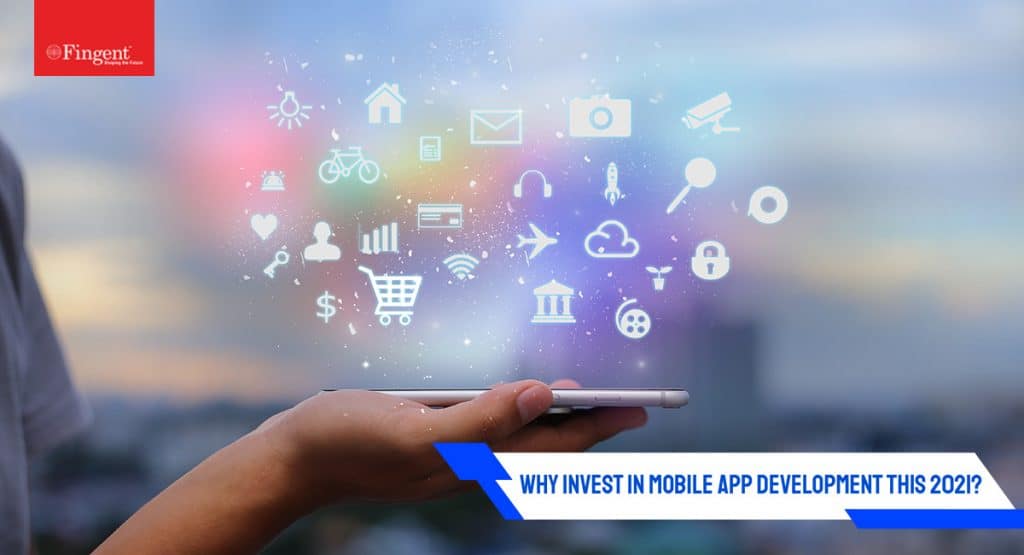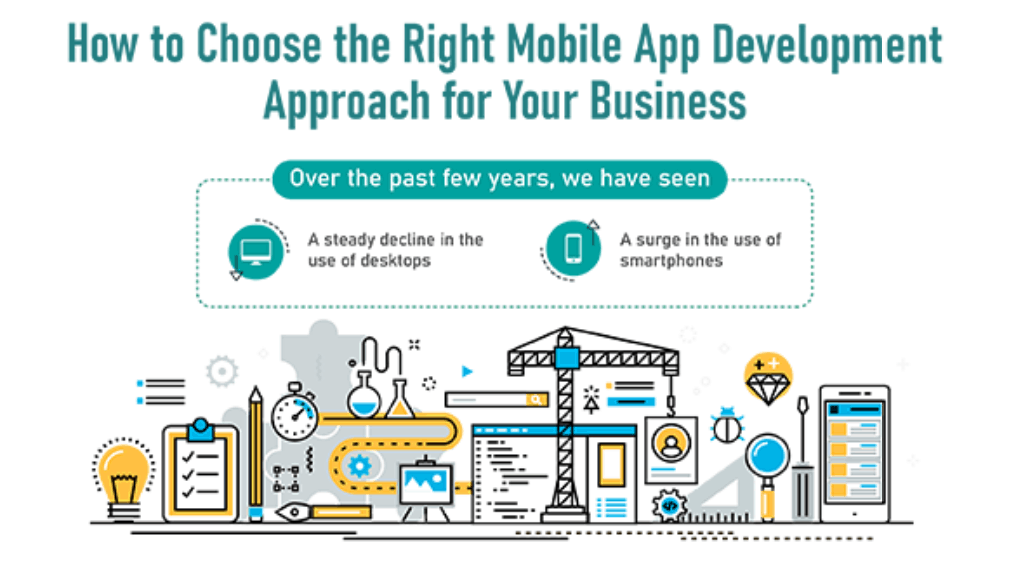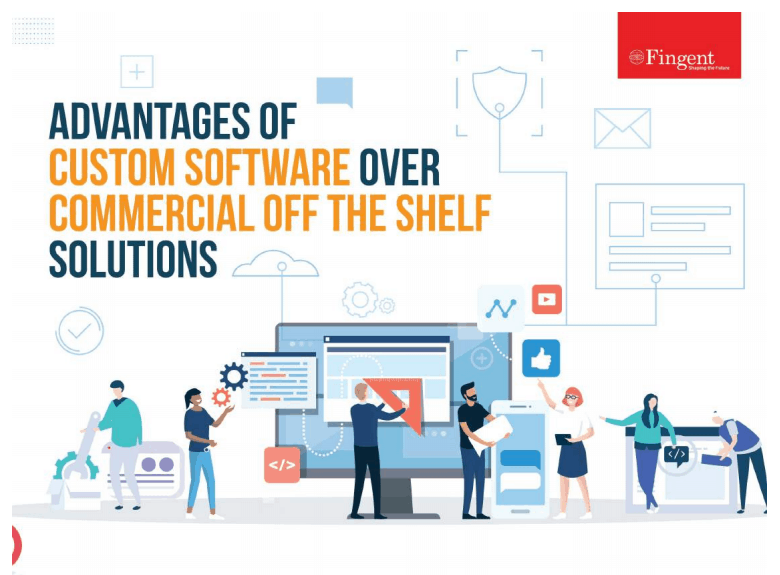Category: Mobility
To reiterate John F. Kennedy, “Change is the law of life, and those who look only to the past or present are certain to miss the future.”
The digital world revolves around evolution and change. It is constantly transforming from one stage to the next. Do you feel lost in this metamorphosis of digital transformation? Does the fervent adoption of advanced technology into business processes catch you off-guard and unprepared?
We understand and want to help you navigate and thrive in this new era. Stay with us and continue reading.
What Is Digital Transformation?
Digital transformation is the process of utilizing digital technology to develop or modify current corporate practices, culture, and consumer experiences to meet shifting business and market requirements. The perks include better company agility, improved efficiency, and, eventually, the creation of new value for shareholders, consumers, and employees.
According to Gartner, 87% of senior business leaders believe that digitalization should be a top priority for businesses, and 91% of organizations across the globe are currently involved in some sort of digital operation. To improve its client experience, a business might implement AI or cloud computing, for instance. Or it might change its supply chain to ensure machine learning is used more effectively. There are innumerable ways to digitalize your business and reap its many benefits.
Why Is Digital Transformation Important?
The pandemic changed the relevance of digital transformation almost overnight. From a way of enhancing customer care, it quickly became embedded into the core operational and innovative aspects of an organization. In this day and age, an organization’s sustainability may be in jeopardy if it fails to implement digital transformation. This is vital to satisfy the demands of the business landscape. As per Statista, digital transformation has been the leading priority for information technology (IT) initiatives for global companies since 2020.
Businesses are using digital solutions to help them customize their interactions, communications, and goods to meet the unique needs of their clients. For instance, a report by Gartner estimates that by the end of 2020, chatbots will power 85% of customer support. Here are some important reasons why businesses are adopting digital tech:
- Improvement Of Customer Experience – Customer experience is at the core of digital. In order to enhance the customer experience, 92% of business leaders are developing sophisticated digital transformation strategies.
- Additional Data-Based Insights – The tracking and analysis of metrics are made possible by going digital. Making efficient decisions and increasing ROI can both be accomplished by using data-driven insights to better understand customers and re-evaluate business strategies.
- Competitive Edge – By developing new goods and services, entering new markets, and enhancing customer comprehension and service, digital transformation enables organizations to achieve a competitive edge.
- Cost-Cutting – By automating procedures, reducing waste, and improving supply chain management, digital transformation lowers business expenses. A McKinsey study found that businesses that completely adopt Digital Transformation can cut costs by up to 50%.
Stages Of Digital Transformation
Digitization, digitalization, and digital transformation are the three major stages of the Digital Transformation process. A successful implementation requires businesses to move from one stage to the next seamlessly.
- Digitization – The transformation of manual (analog) information into digital format, enabling easy manipulation, storage, and transmission, is called digitization. It is the process of moving to a digital business. For instance, converting paper forms into electronic documents.
- Digitalization – Using digital technologies and digitalized data to enable or improve business processes is known as digitalization. For instance, using a marketing website, software, or mobile app to stay in touch with customers and employees is an example of how digitalization may modify an organization’s operating structure and provide new revenue and value-producing opportunities.
- Digital Transformation – The use of new and developing technologies to encourage sustainable innovation and creative expansion while making fundamental changes in an array of business-related areas. It enhances all aspects of the organization, including how employees engage with clients and how operations are carried out. For example, it collects insights from previous customer data, behavioral patterns, and purchase history to customize products and services offered. That is one of its many benefits.
How To Discover Where Your Business Stands
Legacy challenges are frequently overcome as part of digital transformation, but how effective is it? Measuring the progress of any effort with well-defined KPIs and metrics is the only way to know how far you have come.
Tips to measure the progress of digital transformation:
- Feedback from your employees and co-workers
- Track fluctuations in customer feedback
- Analyze the data across the different initiatives that you have implemented
Some additional metrics to track include:
- The degree of digital adoption
- Customer satisfaction rankings
Receiving feedback and measuring progress this way can help you locate where your business stands in its Digital Transformation process and improve your strategies to drive better results.
The Future Of Businesses In Digital Transformation
From using cutting-edge technologies to making strategic decisions, Digital Transformation is influencing businesses. It alters how firms operate, streamlining operations, boosting efficiency, and establishing a cultural shift. A prediction by International Data Corporation states that 75% of corporate executives will use digital platforms and ecosystem capabilities by 2025 to increase their platforms’ agility, efficiency, and sustainability.
Here are some future trends in Digital Transformation:
1. Low-Code, No-Code
Low-code, no-code is a method of software development that calls for either very little (low-code) or no (no-code) coding at all. As per studies, low-code and no-code platforms will be used for more than 65% of software development by 2024. The market will be valued at $13.8 billion in that year!
2. Cloud Migration
Cloud migration is the act of moving data and applications from one location, typically a company’s on-premises servers, to a public cloud provider’s servers. The four benefits of cloud migration are efficiency, accessibility, scalability, and security.
3. Artificial Intelligence And Machine Learning
AI uses machine learning for data analysis and forecasting to guide efficient digital organizational strategies, personalize interactions, optimize workflows, and offer consistently dependable services 24/7.
Strategizing An Effective Digital Transformation Journey
While undertaking such a big change, it is important to have a foolproof strategy to rely on. Following are a few aspects that you can consider during your digital transformation process:
- Transformation Of Business Strategies – Technology becomes pivotal to business strategy in the aftermath of digital transformation. Operating expenses and inefficiency can be decreased with this strategy.
- Realigning Business Operations – For agility and experimentation, it is essential to transform corporate procedures and adopt new working methods.
- Adopting Novel Methods Of Agility And Experimentation – Modern engineering capabilities must be combined with new working methods as customer expectations and the rate of change increase. Successful digital transformation requires a fundamentally different strategy—one that values the accessibility of technology and the adaptability of people.
- Flexible Technology Is At The Heart Of Long-Lasting Change – Staying fluid and adaptable will enable you to more readily create ecosystem connections that foster speed and scale while also accelerating innovation within your organization.
Watch more: 7 Deadly Mistakes Non-Tech Businesses Make On Tech Projects!
How Can Fingent Help?
Fingent is one of the leading solution providers in the world. We have been around since 2004 and have successfully transformed many businesses from traditional modules into digitalized success stories.
Fingent has expertise in all the technologies that drive a successful digital transformation journey. Specialists in Cloud computing, Artificial Intelligence and Machine Learning, Virtual and Augmented Reality, and more come together to create a holistic digital solution for your business.
Talk with our Digital Consultants, who will analyze your unique requirements and work out a future for your business that is equipped to succeed in the digital age.
Stay up to date on what's new

Featured Blogs
Stay up to date on
what's new



Talk To Our Experts
Today we live in a world where machines possess an extraordinary ability to learn, reason, and make decisions, much like the human mind. This remarkable realm of technology known as Artificial Intelligence is not merely a product of science fiction or futuristic imagination. It has become an awe-inspiring reality that is transforming the landscape of countless industries.
But that’s just the tip of the AI iceberg.
In mobile development, AI can transform your customer’s device into a personal shopping assistant, a language guru, or a creative photographer all in the blink of an eye.
The integration of AI in mobile app development doesn’t stop there.
It unlocks a realm of possibilities for your customers, from personalized virtual assistants that organize their life, to fitness apps that act as their personal trainers, to healthcare apps that monitor their well-being.
But how do we understand the concept of AI in mobile apps?
Unraveling Artificial Intelligence in Mobile Apps
Simply put, AI is like the brain behind the scenes, making your apps smarter and more interactive.
One of AI’s superpowers is Machine Learning (ML). It’s like a super adaptable brain that learns from data and experiences. Machine learning algorithms analyze massive amounts of information to get better at tasks. They can recognize patterns, make predictions, and even understand your preferences.
Another clever component is Natural Language Processing (NLP). It’s like an AI language translator that allows you can talk to your app, ask questions, and it magically understands and responds. NLP allows your AI sidekick to grasp the meaning behind your words, making conversations with your app feel more human-like.
How does it help?
Read more: Understanding NLP: Will It Reign Supreme In Near Future?

From Mundane to Marvelous – Benefits of AI In Mobile Apps
Weaving the powers of AI into your mobile apps can enhance user experience. How? Like a brilliant and intuitive companion, AI-powered mobile apps can provide personalized recommendations. AI algorithms analyze user behavior, learn their tastes, and curate a world of suggestions.
Plus, it learns and grows with them. The more your customers use your apps, the smarter those apps become, tailoring their suggestions to your customer’s ever-changing whims and fancies and predicting their move, and effortlessly serving up what they need.
Read more: https://www.fingent.com/blog/is-ai-powered-mobile-app-what-you-need-for-your-business-now/
Key Applications of AI In Mobile Apps
AI brings a layer of intelligence to your apps that takes them to the next level. Here are some key applications that this has made possible:
1. Voice Assistants and Natural Language Processing
40% of mobile users use voice search at least once a day. – Comptia.
Natural Language Processing (NLP) enables the integration of voice assistants like Siri, Google Assistant, and Alexa into mobile apps. No matter how they phrase it, NLP enables your app to decipher the meaning and context of their spoken words.
It is capable of unraveling the intricacies of slang, deciphering accents, and even understanding complex sentences with multiple layers of meaning. It’s like having a language expert at your beck and call. But it doesn’t end there. NLP allows voice assistants to learn from every interaction, becoming more intelligent over time.
2. Personalized Recommendations
AI algorithms can analyze user data to provide personalized recommendations in mobile apps by utilizing machine learning techniques:
- Data Collection: Mobile apps collect user data through various means, such as user registrations, app usage tracking, explicit ratings, and implicit signals like clicks, views, and interactions.
- User Profiling: Such data is used to create user profiles that capture individual preferences, interests, and behaviors.
- Pattern Recognition: AI algorithms can identify similarities based on factors like item attributes, past behavior, and user demographics.
- Recommendation Generation: Based on the identified patterns, the algorithms generate personalized recommendations. For example, in a music app, the algorithm might suggest songs or artists similar to the user’s previous listening habits or recommend popular tracks among users with similar tastes.
The benefits of personalized recommendations for user engagement and satisfaction are significant:
- Enhanced User Experience: Users are more likely to discover new content they enjoy and spend more time using the app.
- Improved Discovery: Personalized recommendations help users explore new music genres, discover new movies or shows, or find products that suit their tastes, leading to greater satisfaction.
- Time and Effort Saving: With personalized recommendations, users can find relevant content more quickly and easily.
- Increased User Retention: When users receive preferred recommendations, they are more likely to remain engaged with the app.
- Business Benefits: Personalized recommendations result in improved conversion rates and increased customer loyalty.
3. Image and Video Recognition Tasks
AI plays a crucial role in mobile apps across industries, including e-commerce, social media, entertainment, gaming, and more. For example:
- Facial Recognition: This technology is widely used in mobile apps for various purposes, such as authentication, photo tagging, and personalization.
- Object Detection: With AI algorithms, mobile apps leverage object detection for a range of purposes, such as visual search and safety features.
- Augmented Reality (AR) Experiences: AI algorithms are employed in mobile apps to enable applications like virtual try-on for shopping, gaming, and navigation.
Read Case Study: How Fingent helped build a unique mixed reality application for a leading university that enables users to identify people using facial recognition!
4. Intelligent Chatbots
The integration of AI-powered chatbots in mobile apps revolutionizes customer support and interaction by enabling efficient and automated communication with users. Using AI algorithms, chatbots recognize the intent behind user queries and quickly search and retrieve relevant information to address user queries effectively.
Success Stories
Mobile apps have been able to enhance user satisfaction, drive revenue growth, and achieve operational efficiency, resulting in their success in the mobile app market. Here are some examples:
1. Instagram
Instagram, one of the “big three” social media platforms, utilizes AI algorithms to provide personalized content recommendations in the Explore tab. This greatly improves user engagement by helping users discover relevant posts and accounts. AI is also used for content moderation, and identifying and filtering out inappropriate or spammy content, thus creating a safer user environment.
Impact: AI integration in Instagram has contributed to increased user engagement by facilitating content discovery and improving user safety by detecting and removing harmful content. Today it is 4th most used social media platform and 5th most visited website.
2. Uber
Uber, a ride-hailing platform, employs AI algorithms to optimize its dynamic pricing system. Machine learning models analyze supply and demand patterns, traffic conditions, and historical data to determine surge pricing, ensuring efficient allocation of drivers and meeting high-demand periods.
Impact: AI integration in Uber enables efficient pricing strategies, ensuring the availability of drivers during peak demand and generating increased revenue for the company.
In 2022, Uber experienced substantial growth with a revenue of $31.8 billion, marking an 82% increase from the previous year. Furthermore, the number of completed trips also saw an increase, with Uber drivers recording 7.6 billion trips, exceeding the previous peak of 6.9 billion trips in 2019.
3. Amazon
Amazon, a leading e-commerce platform, extensively uses AI across its mobile app for personalized product recommendations, dynamic pricing, inventory management, and fraud detection.
Impact: AI integration in the Amazon app has led to increased user engagement by providing relevant product suggestions, improved customer satisfaction through personalized experiences, optimized pricing strategies, and enhanced operational efficiency.
In Amazon, it was observed that there is a 42% likelihood of a customer proceeding to a prospective product purchase. On the other hand, Walmart and Etsy have recorded figures of 16% and 13% respectively.
Amazon’s Alexa has taken over the world’s smart speaker industry, by securing an impressive 26.4% market share.
Emerging Trends in AI For Mobile Apps
Emerging trends in AI for mobile apps are shaping the future of mobile app development. Here are two key trends:
1. Edge Computing: Edge computing involves processing data locally on the device or in nearby edge servers, reducing the reliance on cloud computing. This trend enables AI-powered mobile apps to perform complex tasks and analysis directly on the device, leading to faster response times, enhanced privacy, and reduced dependency on internet connectivity.
Implications: The increasing adoption of edge computing enables apps to respond quickly to user inputs, process sensor data in real-time, and provide immediate feedback, leading to faster and more seamless experiences.
2. Federated Learning: Federated learning allows AI models to be trained collaboratively on decentralized data from multiple devices without transferring sensitive user data to the cloud. Each device performs local model training, and only model updates are exchanged, ensuring privacy and data security.
Implications: Future advancements will likely include greater transparency, explainability, and fairness in AI algorithms to ensure user trust and mitigate potential biases or discriminatory outcomes.
Personalize, Engage, and Future Proof with AI
In this era of technological revolution, artificial intelligence stands as a beacon of innovation and possibility. AI integration in mobile apps offers compelling benefits such as personalized experiences, improved user engagement, increased efficiency, advanced functionalities, data-driven decision-making, competitive advantage, and future-proofing.
These reasons make AI integration a strategic choice for app developers looking to deliver exceptional user experiences and drive the success of their mobile app projects.
By partnering with Fingent, you can leverage our expertise in AI and mobile app development to unlock the transformative potential of AI in your app projects. From custom travel apps to apps using AI enabled chatbots and virtual assistants, Fingent has created unique solutions for clients across the globe. Our commitment to delivering tailored solutions, adherence to data privacy, and end-to-end services make us an ideal choice for AI mobile app development.
Contact us, the leading custom software development company, and let’s explore the possibilities together.
Stay up to date on what's new

Featured Blogs
Stay up to date on
what's new



Talk To Our Experts
From the moment we wake up, mobile apps have become an inseparable part of our lives! From sleep trackers to fitness apps to alarm clocks and everything in between, we rely on mobile apps to accomplish almost every daily task. Mobile apps also play a vital role in more complex choices in life, like dating. A world without smartphones and their apps cannot exist any longer. In such a scenario, businesses must continue to make smartphones smarter to stay relevant. The best way to achieve that is to empower mobile apps with Artificial Intelligence.
Are you wondering if your industry can benefit from AI-powered mobile apps? This blog will discuss that and explain how you can benefit from them. Let us begin by understanding how AI-powered mobile apps are impacting business.
Impact Of AI-Powered Mobile Apps on Businesses
“The measure of intelligence is the ability to change,” said Albert Einstein. That is a reality in technology. Growth requires change, and change requires intelligence. AI achieves growth by bringing in that much-needed change in mobile apps.
AI is instrumental in driving innovation in mobile apps. Today many users neglect applications that do not have innovative features. This calls for developers to be on the ball when it comes to facilitating digital transformation with the help of AI.
AI-powered apps are experiencing higher than anticipated demand. According to Fortune, the AI market size is projected to grow from USD 387.45 billion in 2022 to USD 1,394.30 billion by 2029. A staggering figure indeed!
Well, that is not all. Here are some facts that are keeping mobile app developers and publishers on their toes:
- There are over 6.5 billion smartphone users worldwide.
- On average, an American looks at his phone 344 times each day. That is once every four minutes.
- 88% of mobile time is spent on mobile apps, and the app percentage continues to increase yearly.
- 47% of established organizations have applied an AI strategy to their mobile apps.
AI-powered mobile apps can help businesses conquer their market. Let us understand why and how they can prove to be game-changers for top industries.
Top Industries That Can Benefit from AI Mobile Apps and How
Mobile apps allow users to do many things more conveniently, quickly, and smartly. AI-powered mobile apps have turned smartphones into on-the-go computing machines. That is why many top industries leverage it to provide new solutions, engage their customers, and thus stay on top of their competition. Here are examples of five top industries that are benefiting from mobile apps:
1. Ecommerce
eCommerce customers prefer to use retail apps over mobile websites for their shopping needs. Top companies like Amazon increased their sales by engaging with and offering customer deals through mobile apps.
It was also noted that mobile apps somewhat level the playing field for small businesses trying to compete with established businesses in their sector. Mobile apps also increase the probability of customers purchasing more than what they would buy when they visit the website. It is imperative that businesses adopt AI-powered app development as part of their growth strategy.
2. Healthcare
AI applications can build sophisticated machines, analyze chronic conditions and quickly provide medical data to medical staff. Using AI-powered mobile apps in the healthcare industry can minimize in-person doctor visits allowing doctors to quickly and efficiently treat their patients in real-time. They improve the medical facility and expedite services.
Fitness apps have become unbelievably popular after the pandemic. The development of AI-powered mobile apps also encourages people. When fitness apps are merged with health apps, they can measure health parameters like blood pressure and pulse. AI-powered mobile apps can also be synchronized with wearable devices.
3. Education
AI-powered mobile apps allow teachers to create interactive learning materials for their students. Such learning helps the education industry to make learning more fun and interesting. Plus, it beats geographic barriers by enabling students to access educational content worldwide.
It can increase productivity among faculty and permit them to give more attention to their students. AI-powered mobile apps can automate back-office tasks like grading, arranging, facilitating parent-guardian interactions, managing enrollment, and more.
4. Human resource management
AI-powered driven systems can aid in the blind hiring process. Using ML software, HR staff can examine applications based on specific parameters from anywhere in the world. It can scan applicants’ profiles or resumes and provide recruiters with the talent pool they are looking for.
5. Real estate
The real estate industry can benefit from AI-powered mobile apps in a big way. Since most realtors and property owners already use smartphones to rent or buy properties, real estate professionals can use mobile apps to showcase their listings on these platforms. The development of niche applications can help renters to find homes directly through the app.
Read more: How Realtors Are Winning Tenants With Innovative Mobile Apps
How Can You Identify AI Capabilities For Your Company?
No business can afford to sit back and ignore the capabilities of AI-powered mobile apps. However, rushing to adopt AI without thinking it through can be damaging. To fully realize its capabilities, you must approach it with a clear business goal. This means you must narrow it down to your business’s most valuable AI capabilities. How can you do that? Keep in mind these two fundamental steps:
- Identify potential use cases of AI-powered applications in your business
- Sort those potential use cases into just a few top priorities.
How Can Fingent Help?
The possibilities for business growth through AI-powered mobile apps are endless. Fingent is an expert when it comes to AI-powered technologies. We specialize in implementing your solutions into the mobile environment.
We have delivered successful projects globally. Here are three case studies:
1. Ambit
Ambit is an AI machine learning program that simplifies a time-consuming worker’s compensation process that usually takes up to three years. Among several other benefits, this solution offers insurers a 57% reduction in costs. Combining AI with the client’s litigation strategy, Fingent helped develop a solution that now cuts the average case settlement time to 1-2 days at a settlement cost of $15000.
2. AI-powered chatbots
As their technology partner, Fingent helped the University of North Carolina (UNC) develop an automated intelligence-driven ecosystem that facilitates seamless interaction between students and their instructors utilizing AI-powered chatbots. Enhanced learning is made possible by employing a Watson-powered Teaching Assistant (AiTA).
Read more: Using Chatbots to Create an Enhanced and Engaging Learning Experience
3. MUSA
Fingent developed MUSA, an AI-powered virtual assistant, to improve in-house HR teams’ response time. This minimized their workload as MUSA took over the management of routine tasks and gave the HR team more time to focus on their core function.
Top benefits of the solution:
- Improved the HR team’s response time.
- Automation of Frequently Asked Questions (FAQs) minimized workload considerably.
- Helps provide instant and accurate responses to common queries.
- Improved ability of the HR team to handle more complex queries and circumstances.
With a highly efficient team of experienced developers, Fingent custom software development experts are committed to understanding your business needs, using the latest and most advanced technologies to work out the perfect solution for you, and working tirelessly to deliver high-level apps that will transform your business. We have delivered successful projects globally. We are known to offer robust, cost-effective, and customer-centric mobile applications to enterprises and startups.
Give us a call, and let’s discuss how these capabilities can help your business.
Stay up to date on what's new

Featured Blogs
Stay up to date on
what's new



Talk To Our Experts
Everyone uses software products. From toddlers to grandparents, in one way or the other, almost everyone has used a software product. The number of mobile devices operating worldwide stood at almost 15 million in 2021! Today, custom software development permeates the entire world. You are reading this blog on a device whose lifeblood is software. It is no surprise that businesses invest in custom software development. But what is the cost? That is probably the single most important question to businesses intent on making wise business decisions. This article discusses everything that may affect the cost of custom software development in 2022 to help you estimate the cost of your custom app development.
Is Custom Software Development Necessary for Your Business?
Adding to the Statista report that put the 15 million number on the number of mobile devices, did you know that the number of mobile app downloads surpassed 200 billion in 2019? And there is no slowing down.
Along with mobile devices, there are other devices like tabs, laptops, and desktops. And we know that all of these function by the operating system. The operating system is a piece of software with lots of integrated functions known as software.
Individuals and businesses across the world depend heavily on software and enjoy many benefits. In this digital age, customized software is essential to run different operations in transportation, electrical grids, and many other functions that offer the basics of life.
To the question “Is Custom Software Development Important?”, the answer is a resounding YES!
Now to the costs involved!
Custom Software Development Cost Estimates For 2022
It is important to remember that app development cost depends on various factors. Mobile app development costs will be different than web app costs. The cost could also depend on the complexity of the app.
A small app with core features can be developed at lower rates. However, a complex app with intricate features will be expensive. Building a minimum viable product may cost less than $10,000. On the other hand, if you want a customized app that is compatible with both android and iOS platforms you will need a bigger budget.
Custom app development costs also depend on whether you develop the app in-house or outsource it. Before you choose to develop it in-house you must ask yourself if your team has the necessary experience to take an app from design to delivery.
If you do not have the expertise on your team, it may ultimately end up costing you more in terms of lost work and demoralized teams. Otherwise, the best option is to seek out an external partner who can develop an app for you.
Read more: Top Technologies Used to Develop Mobile App
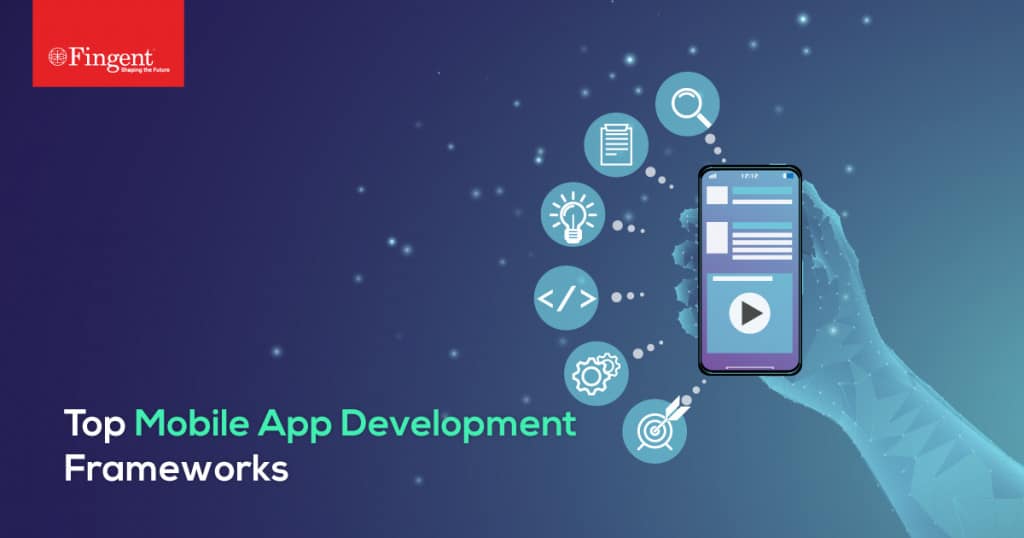
Keeping all this in mind, is there a formula to calculate custom app development costs?
Top Factors That Drive Custom Software Development Costs
1. Based on the complexity of the app
A simple app might take hundreds of hours while a complex app might take thousands. These hours also depend on how efficient the developing team is.
A simple app includes basic features like a login screen, user account, admin tools, and so on. It may have limited integration with other apps. Thus, it may take about 3 to 6 months to develop.
Along with all the features of a simple app, a complex app includes features such as integrations, profile feeds, enhanced admin tools, media streaming, and more. Such an app would take 6 to 12 months.
The most complex of all is an advanced app. This includes multi-language support, versioning, lots of user customization options, AI and AR, and more. This could take somewhere between 12 to 24 months.
2. Based on region
You will find potential developers around the world, over various time zones such as the US, India, and Europe. Each of these areas has expert developers but their rates vary depending on their location.
3. Based on development stages
The budget of the project starts to become clearer during the research stage. In this stage, you will be able to clarify your requirements and finalize goals and deliverables. You will also be able to assess risks and threats.
The next stage would be designed where the development team needs a clearer idea of what the app should look like. This stage will take longer and will be more expensive depending on the complexity of the user interface and so on.
During the development stage, each feature will add to the cost. The next stage of testing may require human users to ensure the correct functionality, and this will add to the cost. The final stage is maintenance and support. Bugs and unexpected behavior will need to be addressed; hence, it is important to budget in the final phase.
Watch now: How To Choose The Right Mobile App Development Approach
Top Ways In Which One Can Initiate Cost-Effective Custom Software Development
Are you wondering how you can get the app that you wanted in your limited budget? Here are a few tips that help you initiate a cost-effect app development.
1. Use software development kits wherever you can: Software development kits could trim weeks or months off your development schedule. Thus, reducing thousands off your development budget.
2. Find a vendor that can design and develop: Finding a vendor that does both designing and development can help you deal with communication problems and optimize workflow.
3. Get the MVP made: Getting the MVP made and testing on your users will help you identify what needs to be added. Eventually, your full-featured app will be ready. Besides, you will also learn how to optimize your budget.
4. Cross-platform development: Opting for cross-platform development can heighten your potential to reach a wider audience.
5. Do not rely on older operating systems: Just a couple of years older can make a huge difference. It is worth the effort to focus on consumers who keep up to date.
How Can Fingent Help Develop Top-Notch Custom Apps On A Budget?
We at Fingent understand considering how much it costs to develop an app can be an overwhelming experience. How about a consultation with our expert to get a quote?
We assure you that we have the specialized skill and experience to build a successful and budget-friendly app. Don’t take our word for it. Have a look at some of our case studies.
As your technology partner, Fingent can bring your brilliant ideas into digital reality!
We have helped many businesses grow their business with our innovative, modern mobile app solutions. Take a look at our most success stories here!
We can help you too. Connect with our experts today!
Stay up to date on what's new

Featured Blogs
Stay up to date on
what's new



Talk To Our Experts
The impact of the pandemic on consumers across the globe has dramatically changed their demands, needs, and behavior. Many of these changes have critical implications for businesses in most sectors. To succeed in the next normal, businesses must respond proactively.
COVID-19 jolted consumer demand in a way that sets it apart from past disruptions. As a result, customer loyalty took a hard hit. Executing the four Ps of marketing (optimization of product, price, place, and promotion) became more complex than ever. Businesses must redouble and broaden their efforts toward meeting ever-changing customer demands and behavior.
As with everything else, it is important for an organization to know and understand its customers. If your company is at crossroads with today’s Ecommerce customers’ needs, this article will help you understand how technology can help satisfy these uprising demands quickly and effectively. So then, let’s first understand how customer behavior, needs, and demands change.
Read more: What are 3D Web Configurators? How do they Boost Ecommerce Sales and Drive Customer Satisfaction?
Ecommerce Customers’ Behavior, Demands, and Needs
Customers are like the moving targets. The key to success is to understand their behavior trends and use technology to help satisfy these uprising needs and demands. Linnworks research pointed to five such trends:
- Convenience is the need of the hour: 76% of consumers feel that convenience is the top priority in choosing a retailer. 90% of shoppers focus on using a trouble-free online store.
- The frictionless shopping experience is most valued: It was noted that 58% of consumers abandoned an online store altogether because they were difficult to use.
- Omnichannel shopping is gaining traction: One in three consumers has purchased an item while on social media. 71% of consumers prefer to complete a purchase on a social site without having to exit to the retailer’s site.
- Consumers demand flexible payment options: Four in five shoppers expect the “buy now, pay later” payment option.
- Delivery convenience: 95% of consumers say that fast and reliable delivery methods play a crucial role in their decision-making.
How Can Technology Help Satisfy these Uprising Needs and Demands of Today’s Consumers?
1. Allow your consumers to experience products before they buy
The biggest roadblock facing Ecommerce businesses has been the inability of consumers to experience products before they buy. Everyone likes to try on clothes they like to buy or see how is their new couch looks in their living room.
This is where AR (Augmented Reality) can help your business. AR can help your consumers try on clothes or closely inspect the components of a mobile device. AR market is expected to reach 2.54 billion by 2023. Online retailers who fail to take full advantage of this technology may likely experience business disruption.
2. Bring your product to life with virtual shopping
Virtual reality shopping can bring your products to life. It helps your customers to have an in-store-like experience, without actually being there. VR technology allows you to tag products so your customers can purchase on the spot. It can instantly connect buyers with customer service executives.
VR can make product recommendations based on customer metrics. It can also cater to both desktop and mobile users. Thus, it provides a better customer experience attracting more customers to your online store.
3. Be omnichannel ready
Todays’ Ecommerce customers like to cross-channel research and purchase. So, they expect smooth interactions across these channels and devices. Technology can help you to provide your customers with what they want, when they want it, and where they want it to. Some of these technologies include video chat, screen sharing, document interaction, e-signature, and more.
Co-browsing is an effective visual engagement system. It can bring your sales executives and customers together on the same page, at the same time. This allows your executive to guide your customers through the complex procedures making their customer journey as smooth as it can be.
Read more: Custom Retail Software Solutions: Everything You Need to Know!
4. Enhance customer communication with chatbots and AI
Artificial Intelligence has a major impact on how we live and work. Voice shopping is expected to jump to $40 billion by 2022, rising from $2 billion today. And 45% of millennials have already been shopping using voice assistants.
Chatbots and AI improve customer experience and boost brand image. These chatbots can be personalized to order food, get recommendations for almost anything, receive details regarding payment or order status, and more.
5. Hassle-free checkout process
Inefficient checkout processes can raise the chances of cart abandonment. However, this problem can be avoided by embracing technology that provides quick and efficient checkout solutions.
Technology enables speedy mobile payment solutions, allows your customers to save card details for repeat purchases. Above all, it proves one-page hassle-free checkouts and offers a range of payment options. All these can alleviate any potential difficulties your customers may face at checkout.
6. Enable m-commerce to enhance Ecommerce
Today many shoppers shop on the go. Hence, mobile platforms have gained greater importance. So much so that m-commerce is emerging as a concept. Given that, providing a mobile-oriented shopping experience will certainly help you win potential customers, maximizing your chances of future success.
Ecommerce mobile apps offer continuous engagement with your brand. It can help them familiarize with new and relevant purchasing opportunities. These apps also allow you to market products relevant to the specific geographical location of your customers.
Read more: 5 Reasons to Integrate Your E-commerce Application with Odoo ERP
How Can Fingent Help Deploy These Evolving Technologies For Ecommerce Businesses?
It is one thing to understand your consumer behavior but another thing entirely to implement technology to satisfy their demands and needs. Fingent is here to help you implement these technologies efficiently. We can help you move the needle and dominate your niche in the Ecommerce industry.
Fingent can help you implement those that make sense and put the rest on the back burner. We can aid in the success of your Ecommerce venture by implementing cutting-edge technologies. Our development experts will help you promote your products in new and innovative ways.
Choosing Fingent as a software development company helps you save time and money and avoid unnecessary complexity, as we can provide all the needed components. Our platforms are easy to manage yet robust enough to house thousands of products. We can handle unique order processes and payment terms for your Ecommerce sales. Let’s get talking.
Stay up to date on what's new

Featured Blogs
Stay up to date on
what's new



Talk To Our Experts
A comprehensive guide to developing mobile apps in 2024 and beyond!
- Introduction
- What is Mobile Application Development
- Types of Mobile Applications
- Mobile Application Development Platforms
- Mobile Application Development Process
- Mobile Application Front-end and Back-end
- End-to-end Mobile App Testing
- The Cost to Develop a Mobile App
- Five Reasons Why Mobile Apps Fail and How to Prevent The Let-down
- Tips for Building Successful Mobile Apps
- Develop Your Mobile Application with Fingent
Introduction
Mobile apps – it seems like the world cannot function without them anymore! 2021 has seen a dramatic shift to online shopping. Increased reliance on the digital world pushes businesses to turn to mobile apps to tap a higher customer base. This makes it imperative for businesses to leverage the benefits of mobile application development. Regardless of their size, all businesses can use mobile application development to improve their revenues.
This blog will help you understand all that you must know about mobile application development. We will give you a basic idea of the app development process, different types of mobile apps, and the cost of developing mobile apps.
What is Mobile Application Development?
Mobile application development is the process of creating specific software applications that work on mobile devices. It involves creating installable software bundles, implementing back-end services, and testing the application on target devices. Mobile application development is also about the strategic process of designing, building, and launching a successful mobile app.
Mobile app development is a technique that leverages all the benefits a mobile device has to offer. This process takes into account the limitations of mobile devices and helps businesses to balance cost with functionality.
Types of Mobile Applications
Mobile applications are designed and developed with various frameworks. These include:
1. Native mobile apps
These are developed exclusively for a single platform written on one programming language for a particular operating system, for example, Android mobile apps or iOS mobile apps. As they are built to work on a specific OS or platform, native mobile apps are faster, more reliable, and offer offline capabilities.
2. HTML5 mobile apps
These apps help you enjoy the write-once-run-anywhere approach. Most of the Zoho apps are built using HTML 5. HTML5 mobile apps are compatible with cross-platforms and are cost-effective.
3. Hybrid mobile apps
These apps consist of back-end code and native viewer capabilities. Some of the world’s leading apps, like Gmail, Twitter, Amazon, etc., are hybrid apps. Hybrid apps can take advantage of plugins that allow developers to access the native features of platforms. In addition, they are faster to develop and simple to maintain.
Read more: Hybrid Mobile Apps: When and Why to Choose It For Your Business
4. Progressive web apps
Progressive web apps operate in a browser but act like native mobile apps. This means that no installation is involved, and PWAs are secure, cheaper, faster, and easier to develop.
Each mobile application development approach has its own advantages and disadvantages. Hence choose a method that matches your strategy. Your choice will help you achieve the desired user experience and build native features needed for your application.
Watch video: How To Choose The Right Mobile App Development Approach
Mobile Application Development Platforms
Two important mobile application platforms are iOS and Android. iOS is Apple’s mobile operating system specifically built for iPhones. Android runs on mobile devices manufactured by Google and various OEMs. Though there are many similarities between the two, each of them uses a different software development kit. For example, some of the top Android programming languages include Java, Kotlin, C++, C#, BASIC, Lua, etc. Examples of leading iOS programming languages include Swift, Objective-C, React Native, Flutter, etc.
Besides Android and iOS mobile application development platforms, there are cross-platform development programs such as Apache Cordova, Xamarin, Ionic, Python, Ruby, etc.
Read more: Top Technologies Used to Develop Mobile Apps
Leading mobile application development companies like Fingent help you choose the right combination of programming languages and SDKs for developing your mobile apps.
Mobile Application Development Process
Even with all the evidence pointing in favor of developing an app, it is important to thoroughly run through the mobile application development process. This will help you understand how your application will fit in with your goals and your market niche. Choose a path that will give shape to your vision.
Here is an overview of the mobile app development lifecycle:
- Research: All apps begin with an idea. However, it can be successful only when that idea benefits the customer. Ensure that your analysis includes the demographics, motivations, and behavior patterns of your buyers.
- Wireframing: Drawing a detailed sketch of the envisioned product will help you uncover usability issues. After sketching, wireframing will help refine your idea and organize all components.
- Assess technical feasibility: Asking questions, brainstorming ideas, and reviewing the status will help your team decide the initial functionality’s feasibility.
- Prototype: This step will help you see if you are moving in the right direction. It will also allow different stakeholders to have a first look at your app and validate the information you have gathered.
- Design: Create multiple variations of the screen. The clear visual direction will help you visualize the final product.
- Develop: This is the core phase of the app development process, where you actually develop the mobile app.
- Testing: The app is delivered to users to test the user experience. Their feedback and opinions will help you add what your app lacks from their point of view.
- Launch: Publish your app to the app store. However, plan regular maintenance to fix bugs and enhance user experience.
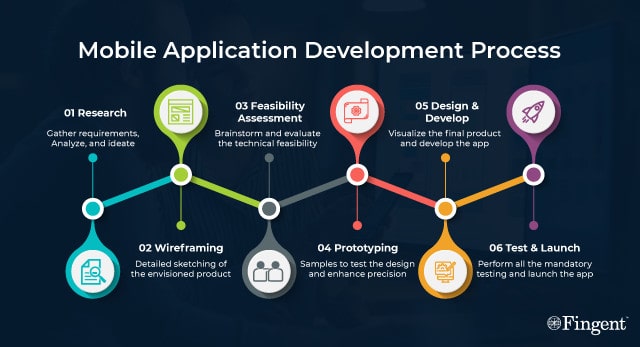
Having understood the lifecycle of mobile app development, it is vital to learn how ‘front-end’ and ‘back-end’ fit into mobile application development.
Mobile Application Front-end and Back-end
Mobile application front-end and back-end services are two core components of the mobile application.
The mobile front-end (client-side rendering) is the visual and interactive part of the user’s application. In contrast, the back-end (server-side rendering) delivers high-quality mobile applications that delight and retain users. The mobile app’s back-end stores, secures, and processes the data.
Some of the key front-end jobs include web designing, UI designing, UX designing, and front-end development. Back-end developers create the services to process the business logic and access the database, cloud services, and file servers to render the app on the server-side.
For applications where there is no interaction with a server, the role of the back-end and front-end developers can be performed by one person. For applications that require internet connection and interaction with a server, you will need two separate developers for each component.
Read more: Everything a CEO Needs to Know About Software Development Outsourcing
End-to-end Mobile App Testing
To stay on top of the competition in the mobile application market, you must test your application before starting the actual sprint. Here are nine steps to ensure the success of your mobile application:
- A developer must outline the list of all the cases and create a test plan.
- Decide whether the test will be manual or automated.
- Define test cases for different functionalities.
- Begin with exploratory manual testing as it does not require the initial investment.
- After detecting the patterns of outcomes and the frequency, consider automating the predictable ones.
- Start the sprint with usability and beta testing.
- Access the performance of the entire system.
- Conduct security and compliance tests to deal with exceptions and unpredictable situations.
- Launch the application to the app store and fix any issues.
These steps of mobile application testing ensure the efficient and enjoyable performance of the entire system.
Read more: Mobile app development: 4 tips to consider
The Cost to Develop a Mobile App
Ballparking the cost of mobile app development is anything but straightforward. Partly, it depends on your choice to develop it in-house or to hire an app development agency. Building an in-house team will incur additional costs such as office space, hardware, and software requirements.
On the other hand, if you choose to hire a mobile app development agency, you can enjoy a cost-efficacy and competitive advantage. These include the agency’s location, experience, and size. It also consists of the complexity of your app and back-end scalability.
Read more: Are you planning to develop a mobile application for your business? Then explore our template and share your requirements with us. We will get back to you with a ballpark estimate.
Five Reasons Why Mobile Apps Fail and How to Prevent The Let-down
Though mobile application development technologies advance year over year, the failure of mobile applications has been a concern for entrepreneurs. However, only ill-planned and ill-executed apps are set to fail.
It is critical to identify the pitfall areas and turn them into positives. Here are a few reasons that can lead to poor mobile applications. You will also find a few tips that help you to avoid mobile application failure.
1. Lack of market research
A tiny mistake in mobile app adoption can quickly turn into a major disaster. If your app does not address your target market needs, then it will not get downloaded. Even if it is downloaded, it may not be used after the first try. A great dream can thus quickly turn into a nightmare that leads to disappointment.
What can you do?
First, do not rush into creating a mobile app. Instead, begin your mobile app development by conducting detailed user study /market research. For your research to be effective, ask yourself, ‘which solution will my app provide that my target audience needs?’
To answer that question, you must define your target audience and investigate further about them. Understanding your market and your specific users will help you create an app tailored to what they actually need.
Second, know your competition. Do a competitor analysis to improve your mobile strategy. Doing so will help connect your idea with your target audience.
2. Lack of robust mobile app strategy
Without a well-designed strategy, your app will fail. This is especially true if you are new to the industry. A poor move at the strategy level is one of the key reasons for mobile app failure.
What can you do?
Every successful mobile app development is a result of a great strategy. It is a creative effort to incorporate consumers’ needs into an app that can accomplish a specific task quickly and effectively. Goal setting is an essential step. Here are some questions you can ask yourself:
- What will be my mobile app’s selling point?
- What features should I incorporate?
- What benefits will my app offer the user?
Such clearly defined goals will help you quickly map out your strategy.
3. Lack of good design
Poor app design and development can lead to bad business because users will ditch your app in the first crucial 8 seconds if the design isn’t great. Substandard coding and improperly implemented technology will lead to epic failures.
What can you do?
Remember, great design can bring in happy customers. Unfortunately, skipping the testing process is often the reason why some apps fail. Smart mobile app developers take time to conduct several QA tests throughout the creation of your app. This will help you deliver an app that is bug-free and user-friendly.
4. Failure to execute the plan precisely
You may encounter some serious competition in your industry. Or your team may experience some conflicting priorities from some key members. Another possibility is that you may run out of cash.
What can you do?
- Your mobile app can succeed if you have an original idea to offer something appealing to your target audience
- Ensure to work with people whom you can trust. And cooperate with your mobile app development partner
- Have a conservative budget that is well planned and generously funded
Following these steps will ensure that you have the money to build and launch your app successfully.
5. Failure to market your app
After all the hard work, it might still fail if you do not market your app rigorously.
What can you do?
- Have a crystal-clear marketing message aimed at your target customers
- Focus on the solution
- Explain how your target user can benefit from it
- If possible, plan to offer discounts and other perks to attract users
Marketing your app clearly and effectively will ensure that your customers do not move on to your competition.
Tips for Building Successful Mobile Apps
Did you know that, on average, a user spends 20 minutes on a mobile app each day? Another incredible fact is, the app installs increased by 31% in 2021. Furthermore, it is expected to surge in the coming years. This means there is hope for your app. Read on to find out how to approach building a successful mobile app that achieves your business goals.
- Be Agile but know your limits: Being agile and quickly reacting to the ever-changing needs of our customers leads to success, but it comes with a price. It is important to know when to be agile.
- Be alert to risks: Be enthusiastic and optimistic about your product but be realistic about the risks and problems. Identifying the risks early will help you react faster and more accurately.
- Build trust: Make your users feel unique and appreciated. Transparency and trust are the foundation for genuine interactions between the application and its users. To achieve this, you can create a trustworthy rating or review system and a functional service system.
Read More: Building a Business Mobile App in 2021? Here’s What You Need to Know
Develop Your Mobile Application with Fingent
The increasing adoption of remote work culture, online shopping, telemedicine, and e-learning has surged the demand for portable devices, particularly smartphones and tablets. This again has increased the need for mobile apps across all lines of business. According to App Annie’s forecast, the number of mobile app installs will reach 258 billion by 2022, an incredible 45% rise from 2019.
Fingent specializes in mobile app development, and our experts can help position your app for success right from idea to launch. In addition, leading B2B review firms like Clutch and Business of Apps have recognized our mobile app development expertise. Contact us to know more.
Stay up to date on what's new

Featured Blogs
Stay up to date on
what's new



Talk To Our Experts
Progressive Web Apps: New Cutting-Edge Trend in Web Development
Speed and convenience have become crucial in keeping online shoppers engaged. Progressive Web Apps development is a solution that allows the shopper to enjoy an app-like experience via a website (using web browsers). Users can install the PWA application from the browser window and access it just like a native app. In addition, progressive web apps improve the quality of your web applications, making them reliable, fast, and engaging.
Are you considering PWA for your business growth? Is it worth exploring this option? This blog will help you take a closer look at why Progressive Web Apps are turning to be the new cutting-edge trend in web development.
What is a Progressive Web App?
Frances Berriman and Alex Russel coined the buzzword “Progressive Web Apps” in 2015. To date, PWA has been a big player in this mobile-first world. Progressive Web Apps (PWA) have caused digital marketers to rethink how they design and deliver sites.
Progressive Web Apps can deliver a blazingly fast and slick app-like shopping experience to the end-user. It combines the best of two worlds: your website and the native application. It can be called a hybrid app as users can now browse your website on their mobile. Besides, PWA promises to solve two vital issues:
- Performance and usability
- Mobile-web conversion rates
Read more: Native Apps vs. Web Apps: Choosing the Best for Your Brand
Business Benefits of Progressive Web Apps
Several companies that focused their efforts on PWAs instead of having a separate native app have experienced increased conversions. A best case in point is the world’s largest online B2B trading platform, Alibaba.com. Alibaba.com increased its conversion rate by 76% across browsers after upgrading its website to PWA.
Here’s how your business can benefit from PWA:
1. High-performance rate
Response time is crucial for audience engagement and better conversion rates. PWA responds quickly as the browser uses caching to save the elements of the layout that are repeated in the template. This improves the speed of downloads and reduces page load time. Subsequently, better performance leads to a better user experience, which in turn increases customer retention rates.
2. Ease of use across multiple devices
Progressive Web Apps are built with a responsive layout in mind for an improved user experience. A responsive design will fit into any size of the screen with ease. In other words, PWA will adjust the experience as per the device screen size. You can further improve the user experience with a PWA manifest file that controls the full-screen view.
3. Seamless browsing experience
A traditional website is virtually useless without a stable internet connection, but not a Progressive Web App. PWA can be easily viewed offline as service workers automatically cache important application features and information from the user’s last online access. This way, the user can access it without any network. Plus, you can add a brand logo, product descriptions, and few advanced features to your offline page.
This is an additional incentive for shoppers to choose businesses with a Progressive Web App over those that use native apps. Such a seamless browsing experience rewards you with better engagement rates and customer retention.
4. Resembles native-built applications
PWAs can be designed to look and behave like native apps, or they can be designed to let users know they are browsing the Progressive Web App. Regardless of the developer’s choice, it can contain a complete set of traditional app functionalities with database access. The best part is that you can seamlessly integrate the application into an existing website or an app.
Watch Video: Fingent can help you choose the right mobile app development approach by evaluating your requirements.
5. No installation is needed
Shoppers can download your app directly onto their devices. Once downloaded, it gets its own icon on the screen, just like a traditional mobile application. This will avoid the slow and complex installation process, improve user experience, and reduce user abandonment.
Here is another way it can benefit you: users can easily access the PWA via a URL. In other words, a user can easily share this link with a friend contributing to increased leads.
6. No manual updates are required
Native apps must be updated periodically through mobile internet or a WIFI connection. Such updates can consume large amounts of data, which may be costly for some users. Fortunately, Progressive Web App updates are performed “on-use,” much like how a website is updated.
7. Low development cost
Developing a mobile app can be a costly process, especially for small businesses and startups. Thankfully, PWA development is much cheaper than traditional app development but provides a better option for companies to generate a positive ROI.
Read more: Mobile app development: 4 tips to consider
8. Wide range of features
The most prominent feature of PWA is push notifications. Publishers and developers can use this feature to implement creative advertising solutions. As the push notifications appear on a shopper’s device screen, it is read more often than emails or updates on social media. This can lead to valuable brand awareness and promote products or services.
9. Improved app and data security
Security has been a concern for both users and developers. According to new standards of web design, all customer information must be moved to HTTPS. So it is highly convenient to launch Progressive Web App within a safe environment. Moreover, it builds customer confidence in the security of their personal information as they enter sensitive data into your PWA.
10. Low data and low storage
Data is costly in some developing nations. That is why it is a bonus that Progressive Web App consumes only a fraction of data usage compared to native apps. Moreover, it does not take up significant storage space on devices, so users are more inclined to use a lighter app on their smartphones. Also, it contributes to better performance.
Read more: Building a Business Mobile App in 2021? Here’s What You Need to Know
Progress with Progressive Web Apps
Progressive Web Apps are the future of web-hosted apps as they can overcome the inherent limitations of web performance and insufficient or unavailable internet connections. Since PWAs can run on any modern platform, soon they will overtake truly native apps. Yes, PWAs have the potential to change the way the web works. However, Progressive Web Apps will not replace websites and mobile apps altogether. It is still in its infancy. To know which option is best for your business, have a chat with the technology experts at Fingent.
Stay up to date on what's new

Featured Blogs
Stay up to date on
what's new



Talk To Our Experts
How is AI Facilitating Healthcare Innovation Over Years
Today Artificial Intelligence (AI) is being used to enhance and improve all spheres of our lives. Artificial Intelligence in medicine is truly life-altering. The technology is used to solve complex healthcare challenges today. AI in medicine helps interpret the data obtained by diagnosing several chronic diseases such as diabetes, cardiovascular diseases, Alzheimer’s, and cancer. Automated systems, tools, and algorithms allow healthcare professionals to minimize errors and control disease progression.
Artificial Intelligence in medicine has considerably advanced two fields: diagnosis and clinical decision-making. The implementation of AI in medicine enables physicians to minimize intra-observer variability and inter-observer variability. It facilitates the interpretation of diagnostic results with high accuracy and speed.
A real-life example: Chest X-rays are among the most common imaging modalities read and interpreted by radiologists in hospitals today. Despite their widespread use, the modalities are difficult to interpret due to their low resolution. The AI models developed by IBM Research Center in California can read X-rays, and their performance is at par with the resident radiologists.
This blog explains how Artificial Intelligence in medicine has been transforming healthcare in the past and present and how it can benefit us in the future.
Read more: Innovative Ways To Leverage Patient-Generated Health Data
How AI has transformed healthcare in the past
In the past, Artificial Intelligence focused primarily on the development of computerized machines that were capable of making inferences or decisions that only humans can make. In 1966, Shakey- “the first electronic person” was developed. It was a mobile robot capable of interpreting instructions. Unfortunately, reduced funding and lack of interest pushed Artificial Intelligence in the medical industry into a phase popularly referred to as “AI winter.” Thankfully, that was not the end.
How is AI transforming the present
Artificial Intelligence in medicine has crossed numerous milestones after the bleak “AI winter.” The present generation has witnessed a paradigm shift across patient treatment, clinical diagnosis, and decision-making. Armed with large amounts of data, doctors are now more capable of providing effective treatment to their patients. AI has revamped analytic methods and changed clinical decision-making techniques.
Read more: 7 Major Impacts of Technology in Healthcare
Increased data volumes enable decision-makers to gain unparalleled insights in all stages of treatment, such as diagnosis, treatment variability, care process, and patient outcomes. According to an analysis by Accenture, Artificial Intelligence in medicine can save 150 billion dollars for the US economy by 2026!
Here’s how AI is transforming medicine and improving patient outcomes.
1. Electronic health records
A CDC survey revealed that nearly 75% of healthcare providers trusted their EHR to improve patient care. AI can make the existing EHR system more intelligent and flexible. AI can improve data discovery and personalize treatment recommendations.
When used with virtual medical assistants, a practitioner can retrieve information from EHRs without becoming a victim of clinical burnout. Thus, AI in EHR can improve both clinical outcomes and clinicians’ quality of life.
2. Medical imaging diagnostics
Medical imaging developers have discovered numerous ways to use Artificial Intelligence in medicine to detect and diagnose a wide range of diseases. These developments range from automating workflows to improving processing speed.
While AI imaging may seem expensive, it saves a vast amount of capital spent on invasive disease treatment and prolonged hospital stays by detecting the disease at an early stage. Ai also improves the accuracy of screenings for conditions by helping doctors in early diagnosis. The advent of molecular imaging allows doctors to diagnose an ailment at the cellular level leading to accurate treatment, better patient outcomes, and decreased mortality and morbidity.
3. Virtual health assistance
Virtual health assistance enhances outcomes by cutting short hospital stays, reducing readmission rates, and improving the patient experience, especially among chronically ill patients. Combining AI with healthcare wearables helps streamline telemedicine and improve patient outcomes.
A Virtual Health Assistant is developed to manage chronic diseases. It collects information about a patient every time he/she visits a doctor. It can be programmed to perform health screenings and send the results to the doctor. Each healthcare facility may choose to have a tailored virtual health strategy. This will help integrate appropriate healthcare platforms and technologies into the delivery model.
4. Proactive medical care
Conventional medical treatment involved treating the patient after detecting the disease. This was called ‘reactive medical care.’ Thankfully, AI brought in a significant shift turning reactive medical care into ‘proactive medical care.’ AI-enabled proactive medical care includes studying patients’ medical history to locate high-risk markets for various diseases. Then they are monitored for any changes. Once an alarming change is detected, the application suggests medical intervention.
These apps encourage the patient to be an active participant in their personal healthcare. These can be extremely helpful or even life-saving in conditions such as palliative care, congenital heart disease, and diabetes management. Such proactive medical care enables the patient to take care of oneself’s daily routine, including emergencies.
Read more: The Application and Impact of Information Technology in Healthcare
Future of AI in medical industry
The journey of Artificial Intelligence in the medical industry has just begun. It has significantly changed patient experience, clinicians’ practice, and pharmaceuticals. AI has found its way from our smartwatches to the supply chain. The future of AI in medicine includes everything from answering the phone to therapeutic drug and device design, making clinical diagnoses and treatment plans, and even conversing with patients. Here are two examples:
1. Drug discovery
AI solutions for the medical industry can identify new potential therapies from vast information available on existing medicines. These will help healthcare providers in redesigning treatments that target new threats such as the Coronavirus. AI can improve the efficiency and success rate of drug development. It can also accelerate the process in response to deadly disease threats.
A report by PwC states that the healthcare and pharma sectors are experiencing 67% improvement in clinical trials and drug discovery with the help of AI.
Listed below are a few examples of how AI handholds frontline workers in the battle against Coronavirus pandemic:
- AI-enabled contactless and wireless thermal scanning devices designed to collect and store precise temperature data of individuals. Care providers can integrate this data into healthcare platforms for further analysis.
- AI-based computer vision programs that can be integrated into drones and CCTV cameras installed in public places to monitor the adherence of the public to COVID safety protocols. It can send real-time alerts to police and public health departments in case of safety violations.
- AI-based robots that help physicians and healthcare workers with patient screening to avoid the risk of virus exposure. It can also enable video conversations with medical experts to procure prescriptions.
- Customized AI applications that help predict COVID-19 symptoms through sample screening. AI also helps in predicting COVID risk scores.
2. Primary care
Multiple organizations are working on ‘direct to patient solutions’ offering advice through voice or chat-based interaction. This can enable patients to receive quick, scalable access for their medical issues minimizing unnecessary trips to the healthcare facility. Healthcare providers should use AI-based direct-to-patient solutions to provide essential guidance for patients in remote geographies of the world.
Artificial Intelligence is revolutionizing the medical industry
Artificial intelligence in medicine is changing the role of doctors and medical professionals. It is also helping patients improve personal health management. AI is here to grow and transform numerous aspects like diagnosis, decision-making, treatment plan, drug development, etc. AI can play a leading role in how the future medical industry operates, ensuring optimal patient outcomes.
Fingent keeps a close eye on the happenings in the medical industry and has developed the necessary capabilities to enable a connected healthcare ecosystem for our clients by developing advanced, end-to-end digital solutions.
Give us a call, and let’s discuss your digital needs.
Stay up to date on what's new

Featured Blogs
Stay up to date on
what's new



Talk To Our Experts
Mobile application development is the #1 priority for businesses and enterprises in 2022. Are you well-equipped to plan your requirements and develop a robust business mobile app?
Mobile app development in 2022: Practices you should follow
As consumer behavior continues to evolve, more and more businesses adapt their strategy to earn customer satisfaction. With the increased public usage of smartphones, e-commerce and mobile backing experience a significant boom. A mobile app is essential for running a business successfully, and its significance has been more than ever before.
A mobile app is not just a mobile version of your website but is a crucial engagement and experience-driven environment needed for a cohesive customer journey. A mobile app can help build a strong mobile presence and attract a large audience towards your services or products.
According to a survey, by 2022, there will be around 7 billion mobile users worldwide, and by 2022, it is estimated that the annual mobile app downloads will reach 258 billion.
According to the ContractIQ survey, roughly 62% of businesses already have an app or are in the process of developing one. 50% of these businesses use their apps for support and engagement, 30% for revenue generation, and 20% for branding. Many companies are investing in mobile apps as they help generate new or expand an existing business.
With many countries still under lockdown and others following social distancing, the demand for apps such as digital payments, groceries, and entertainment has increased tremendously. Many enterprises and businesses have resorted to digital platforms and are reaping their benefits.
Here, we have discussed the importance of investing in mobile apps for your business and how it can boost your business growth even during a pandemic.
Why invest in mobile apps?
With more people turning to mobile apps to interact with brands, businesses’ mobile presence has become necessary.
In general, mobile apps help boost sales, provide a better customer experience and become more competitive.
According to a research by Clutch, two main reasons by which mobile apps facilitate business growth are:
- Improving customer service
- Providing a return on investment
Read more: Mobile App Development: 4 Tips To Consider
Five ways mobile apps benefit your business
1. Adds value to your customers
Customer engagement is the most significant aspect of customer relations, interactions, and transactions. When someone looks for your product or service, it’s essential to keep the person engaged.
You will have to increase your interaction with the customers for better promotion of sales.
So how does a mobile app fit in here? Starbucks’ mobile app is the best example of successful digital engagement that’s both innovative and inviting. Its user-friendly mobile experience, engaging loyalty program, mobile pay and ordering, and integration with other platforms and services make the coffee chain a customer experience leader.
To put it simply, a mobile app like Starbucks can offer an outstanding and engaging digital experience to customers.
2. Boosts brand building
In the past, brands used to advertise their services through posters, calendars, refrigerator magnets, billboards, and hoardings. Companies imprint their brand logos on such mementos to increase their visibility.
Today, a mobile app is capable of replacing all these. A mobile application can promote brand awareness and recognition among customers and be an effective communication channel. By regularly interacting with your target audience through the mobile app, you can earn customer trust.
Customized mobile apps help educate your customers about your brand and engage them effectively. The more they listen to you and your sales pitches, the more they will commit to your brand.
Read more: Top Technologies Used to Develop Mobile Apps
3. Increases sales
You can incorporate different loyalty programs into your mobile app. It will make your customers revisit your store (digital/ physical) and spend more time. Offering rewards in tiered layers allow customers to earn better incentives as they move from one level to another. It will help boost brand recognition.
Gamification is another way by which you can reward winning customers and provide discounts and prices to pre-defined activities such as sharing pictures or a notification. Scratch-and-win is another feature that can help raise engagement among users. It can work well for both customers and vendors.
4. Improves efficiency
Integrated shopping carts with food ordering and scheduling allow the business to house these functionalities like a digital footprint within the app. For instance, if an eatery incorporates an online food ordering system within its app, it will more likely see a significant increase in online and in-app ordering. Similarly, if a retail business collaborates with an e-commerce system, it will see a productivity improvement and eventually overall sales. With mobile apps, companies can enhance user engagement with inbuilt scheduling software that notifies users about the schedule.
5. Build a loyal customer base
Having a loyal customer base is very critical for any business. A mobile app is one of the best ways to engage with customers and create a loyal customer base. An app allows customers to interact with your business at their convenience. With referral programs, you can encourage your clients to refer your products or services to others.
If you are not convinced with the above points, here are a few more reasons to consider incorporating mobile apps into your business strategy.
- Notify users about your new offers and products
- Reach out to younger audiences
- Sync email and social media accounts of users
- Stay ahead of the competition
View infographic: All you need to know before selecting a mobile app development method
Consider a few things before getting started
Planning your mobile app
Before developing your mobile app, you must plan. You need to outline details like objectives, budget, specifications, and scope. Get a clear picture of your app before sending it to a mobile app developer so that you can be quoted accurately, reasonably, and realistically.
Choose the right developer
We may sound a little biased here. However, we need to say that we’re helping brands worldwide to realize their visions w.r.t. their mobile apps. We provide consistent, high-quality, and cost-effective results with robust, agile teams and dedicated QA practices. Our experts can help you identify your requirements precisely, select the technology and framework needed to build your app, customize the app according to your requirements, and update and maintain it regularly.
Watch video: Fingent can help you choose the right mobile app development approach by evaluating your requirements.
If you’re not sure how or where to start with your enterprise or business mobile app, we’re here to help. Fingent’s mobile app development team has curated an app specification template that is simple and straightforward. Please fill out this template and share it with us. Our expert will get back to you with the answers.
Alternatively, you can send us your requirements and queries by clicking here.
Stay up to date on what's new

Featured Blogs
Stay up to date on
what's new



Talk To Our Experts
Is custom software poised to fulfill business needs in 2021?
From small firms to established companies, the COVID-19 pandemic has forced businesses and leaders to embrace digital transformation. Businesses are spending more on custom software solutions to ensure smooth workflow as they switch their operations to virtual workspaces. Custom software development and mobile application development have become inevitable for business growth and success. As technology advances, intelligent interfaces and highly intuitive cognitive capabilities transform businesses in unimaginable ways.
Custom software solutions appeal to tech leaders and companies of all sectors globally. In today’s dipping economy, software development companies like Fingent help businesses restart or rebuild what they lagged with custom software solutions.
Read more: 5 reasons why custom software development is important to your business
What is a custom software solution?
A custom software solution is the best response for both clients and customers to adapt to the new normal. Currently, many organizations are allowing their employees to work from home, thereby limiting physical interactions. Such organizations adopt customized software applications tailored for specific use by their employees. Remote working software tailored to meet specific workplace requirements and maintain privacy without affecting the workflow allows businesses to better serve their customers.
Simply put, custom software development involves designing, developing, implementing, and managing a particular software application used by a specific set of audience, functions, or organizations.
A software development company first analyzes the business and its product requirements to develop customized scalable, dynamic, and cost-effective software solutions. It helps meet the needs and preferences of the customers, clients, and the organization at large.
The new normal is making it difficult for businesses to obtain a competitive edge, so they resort to custom software applications rather than off-the-shelf software development. Thanks to these tailor-made solutions, work is becoming easier and enabling businesses to take a step ahead.
What is the difference between custom software and commercial software?
Custom software solutions are designed and built to adapt to the changing market demands. Off-the-shelf software allows businesses to adjust to their expertise. Commercial off-the-shelf applications come pre-packaged and are purchased by enterprises to carry out their tasks. Custom software enables you to retain only the features you use and supports scalability in the future.
View infographic: What are the advantages of custom software over commercial off-the-shelf solutions?
Why do businesses need custom software development services?
Custom software solutions are one of the best ways for businesses to survive in today’s uncertain market. Moreover, custom software development assures that your data remains secure and confidential as there is a high amount of data security risk with off-the-shelf software. Custom software is the best option today, considering your business’s privacy, security, and accountability. As custom software is made exclusively for in-house use, the associated risks are low.
What are the benefits of custom software solutions?
1. Improves efficiency
Custom software is designed to support the specific processes followed by a business entity and its users. Hence it improves the productivity and operational efficiency of the business and its employees. By automating mundane tasks and tweaking the workflow to eliminate unwanted elements, custom software implementation adds business value.
2. Reduces integration costs
Most of the commercial off-the-shelf software fails to work with existing and legacy applications. If it does not comply, businesses will have to invest further to ensure that the prepackaged software operates with the existing infrastructure. On the other hand, custom software integrates well with the current environment and adapts to a business’s needs.
3. Scalability
Custom software can grow as the business expands or changes. Developers can assess future requirements and incorporate them into the application. It can save costs associated with purchasing additional licenses or subscriptions of commercial applications.
4. Profitability
Investing in custom software development increases the profitability of a business. Depending on the project’s terms and conditions, the organization that creates custom software can own it or license it or sell it to other organizations.
5. Independence
As you will be free of a commercial software vendor, you need not worry about price hikes for licensing and support or whether the vendor terminates a product or goes out of business. However, the business that develops and uses custom software should bear the cost of maintaining and supporting the software. So, every organization must carefully decide whether it’s better to buy or build.
Read more: How to Choose the Right Custom Software Development Firm
Technologies and practices to consider in custom software development
1. Open-source
Open-source indicates that the software source code is open to the public and the development community to use. For example, Microsoft, Linux, and Google. Open source can significantly improve development productivity through software component reuse and improve interoperability by avoiding proprietary architecture.
2. Artificial Intelligence (AI)
Artificial Intelligence allows the software to replicate human decision making and learning. It can enhance the development process. For example, natural language processing (NLP) is used to analyze requirements from elaborate texts and recommends improvements based on best practices. AI technologies such as machine learning and modeling may also be incorporated into applications through application programming interfaces (API) and cloud services.
3. Blockchain technology
Developers are leveraging open- source hyper ledger technology and blockchain ledgers to build new types of secure transactional and financial applications that can boost business processes.
4. Cloud-based development
It brings the advantages of cloud computing by hosting development environments in the cloud. It supports design, coding, integration, and other development functions to build on-premises and cloud-native applications. These environments also promise cost control, speed, and on-demand convenience.
5. Mobile application technology
With the customers’ buying behavior shifting from products and services to experiences, mobile application technology is a must. So, developers have to connect mobile apps with data to improve and enrich the user experience.
6. Analytics technologies
These technologies enable software applications and their users to understand data through dashboards, visualizations, and predictive capabilities. AI, cloud-based services, and automation make it easier to incorporate analytics into applications.
The health crises and economic uncertainties brought in by the COVID-19 pandemic have compelled businesses to adopt solutions tailored for use by their employees and customers. So, opting for custom software solutions is a wise decision as they can be customized to suit your business needs.
Read more: 5 Custom software development trends every business should know
While the initial investments seem a bit high, custom apps will get you a higher ROI in the future. If you are looking for a custom software solution for your business, all you need to do is select a trusted and reputed company like Fingent. We first understand your requirements and help preserve your accountability in the market. To know more, please don’t hesitate to get in touch.
Stay up to date on what's new

Featured Blogs
Stay up to date on
what's new

















